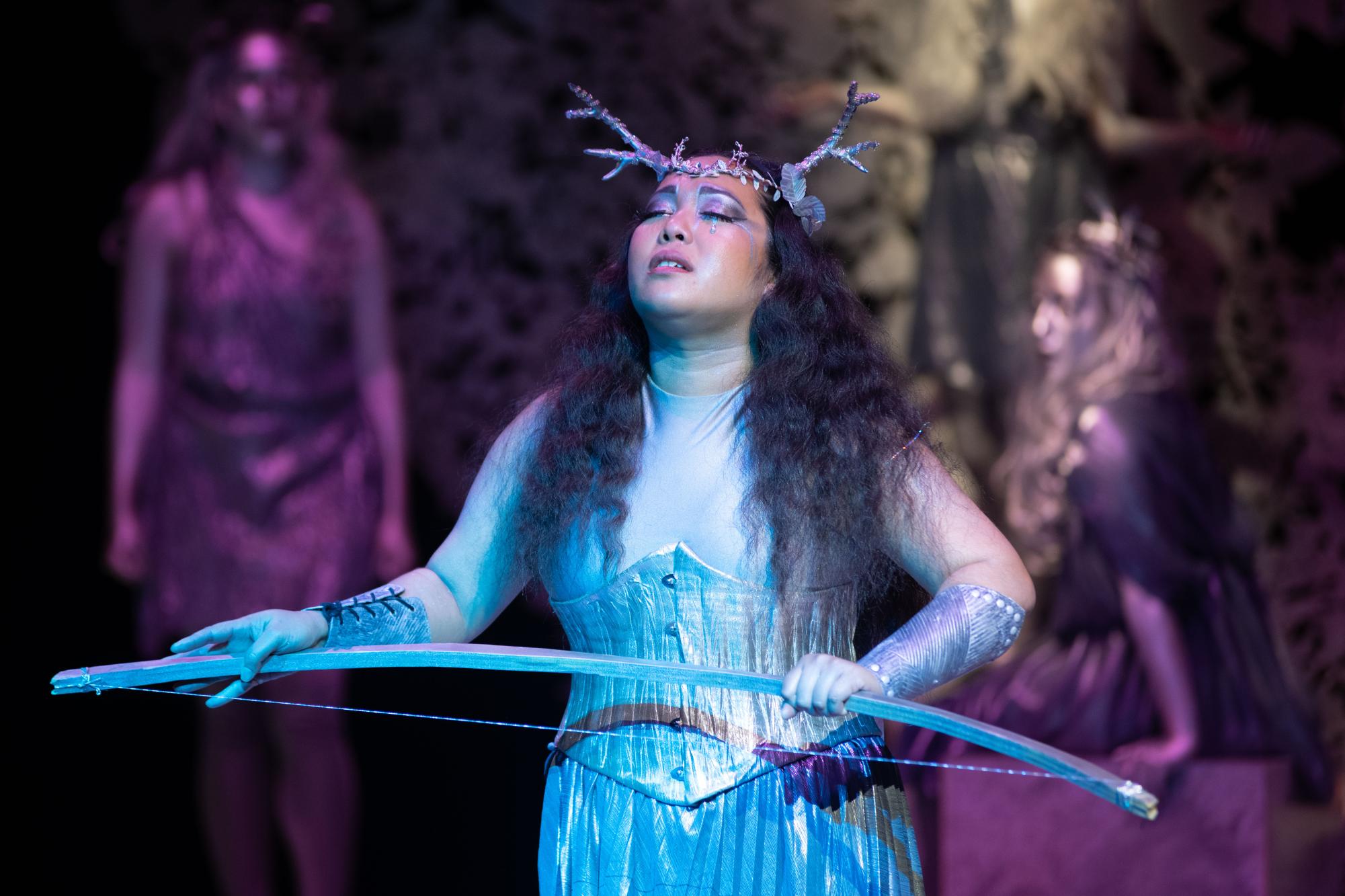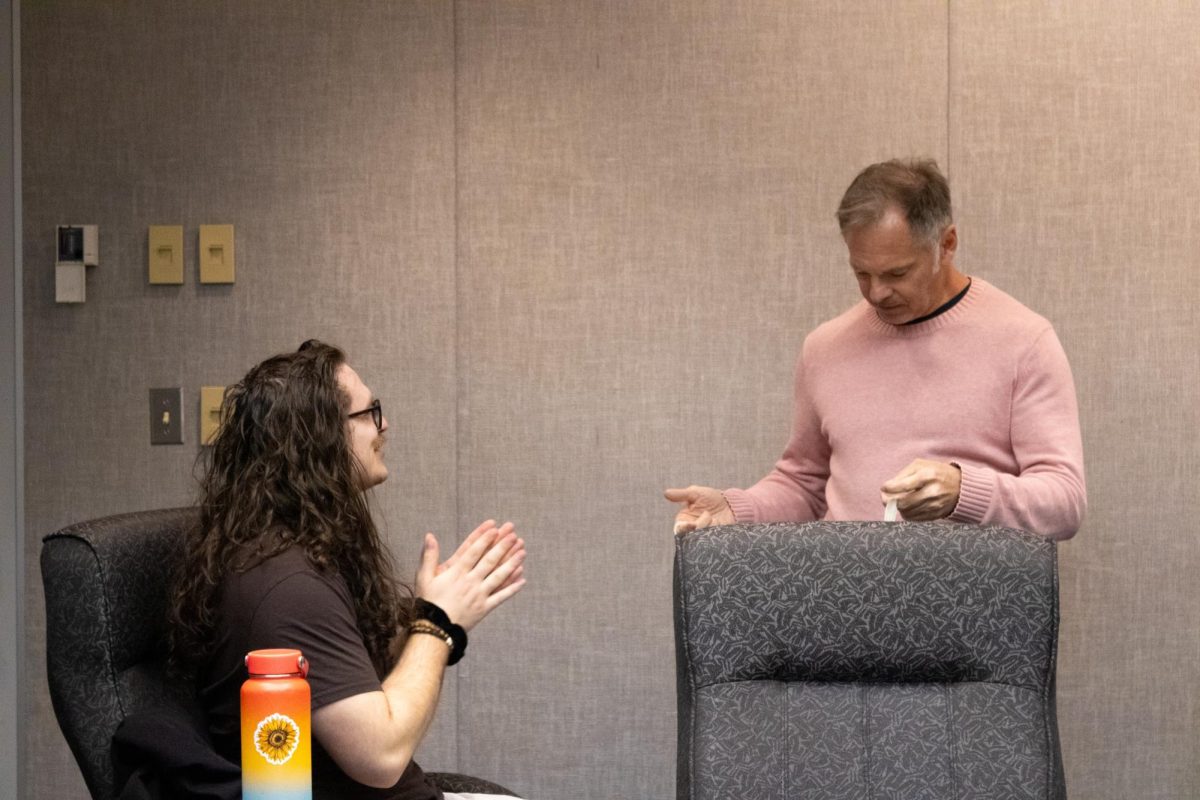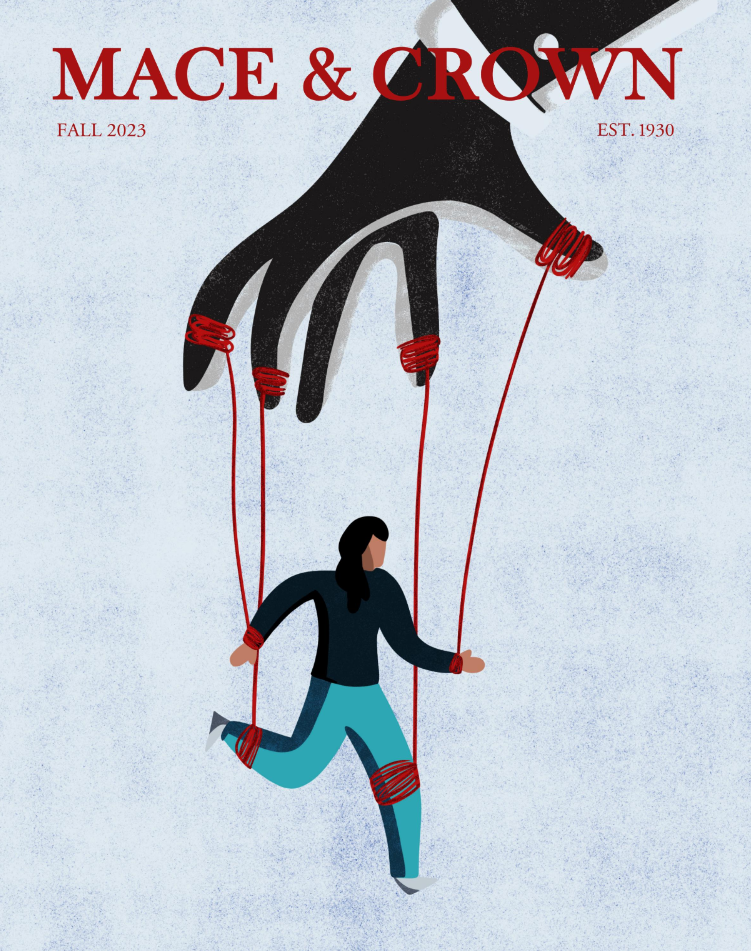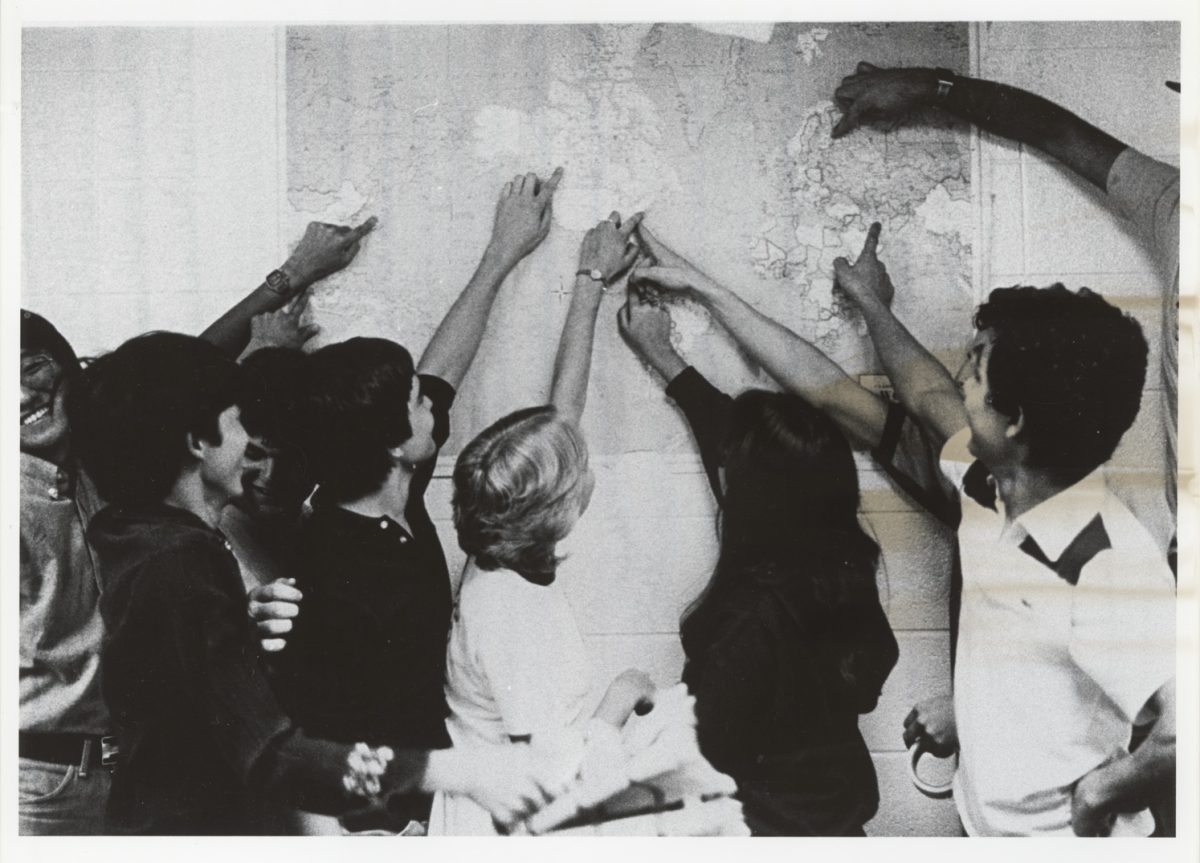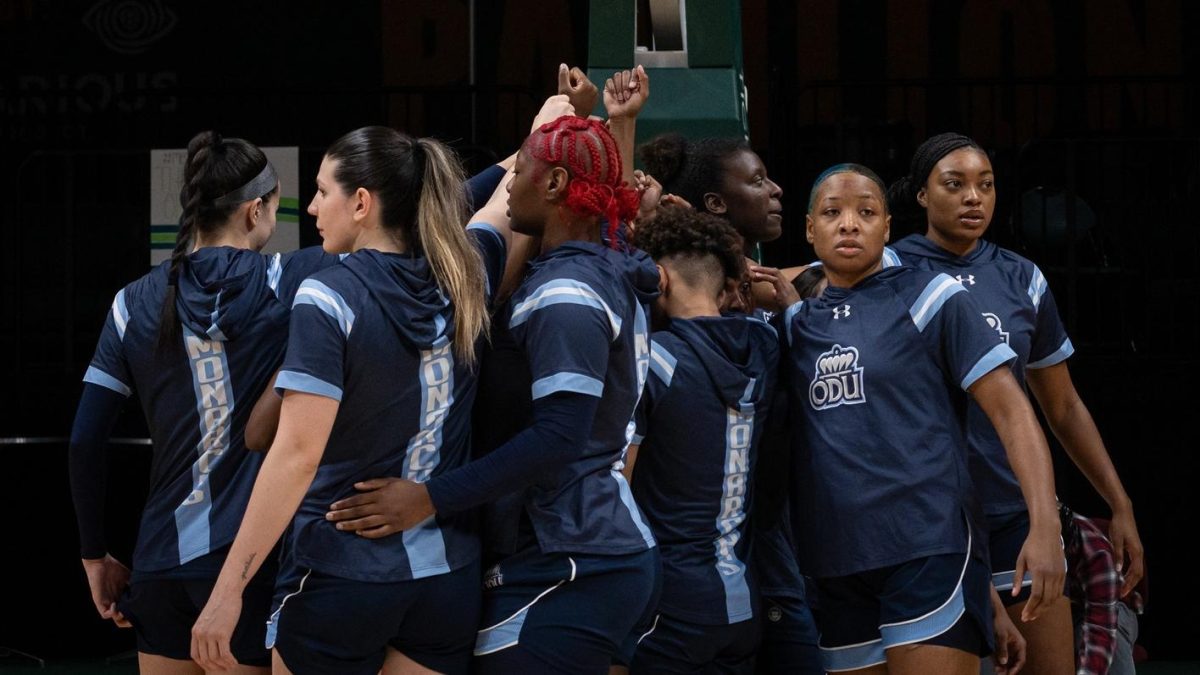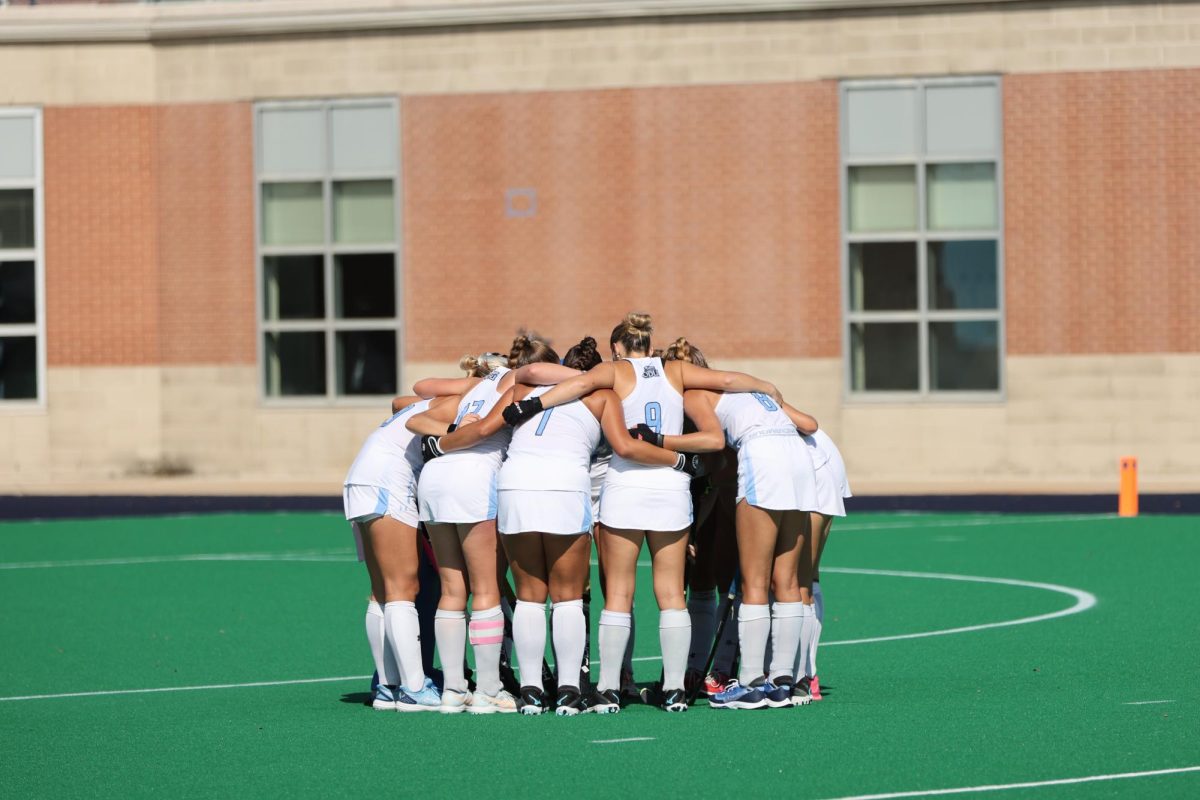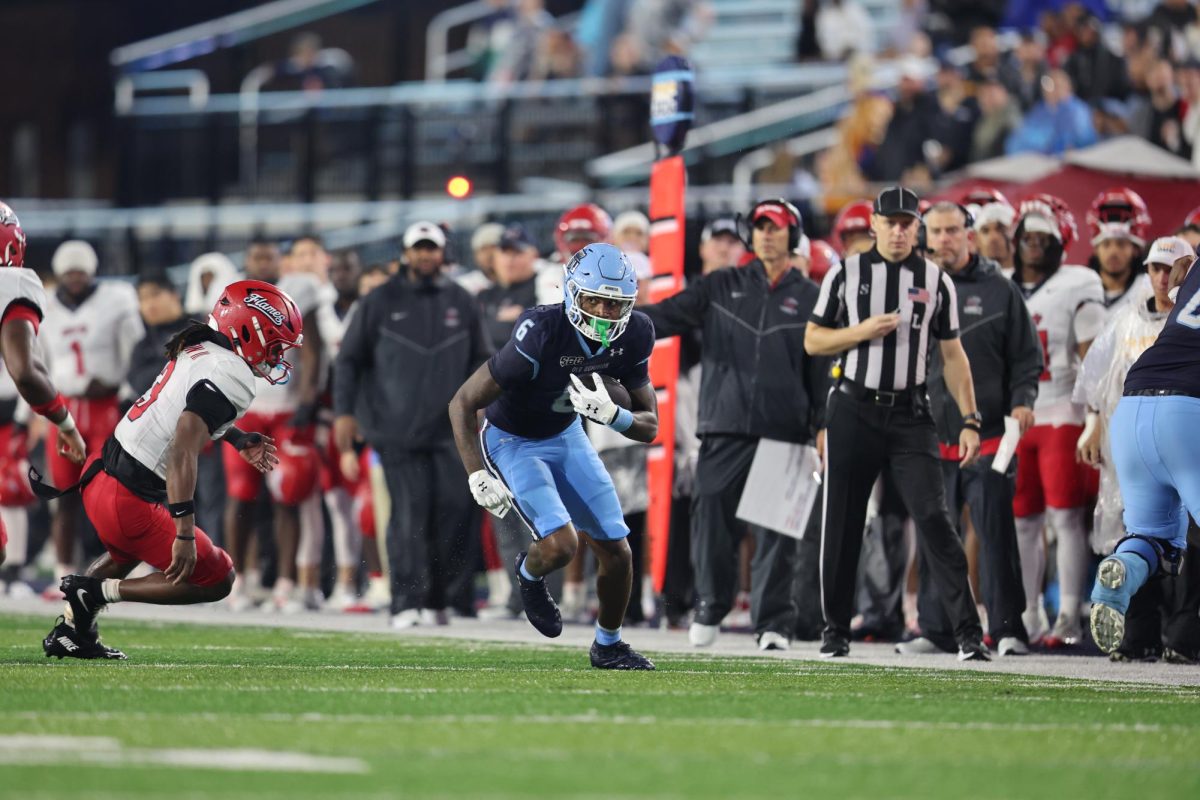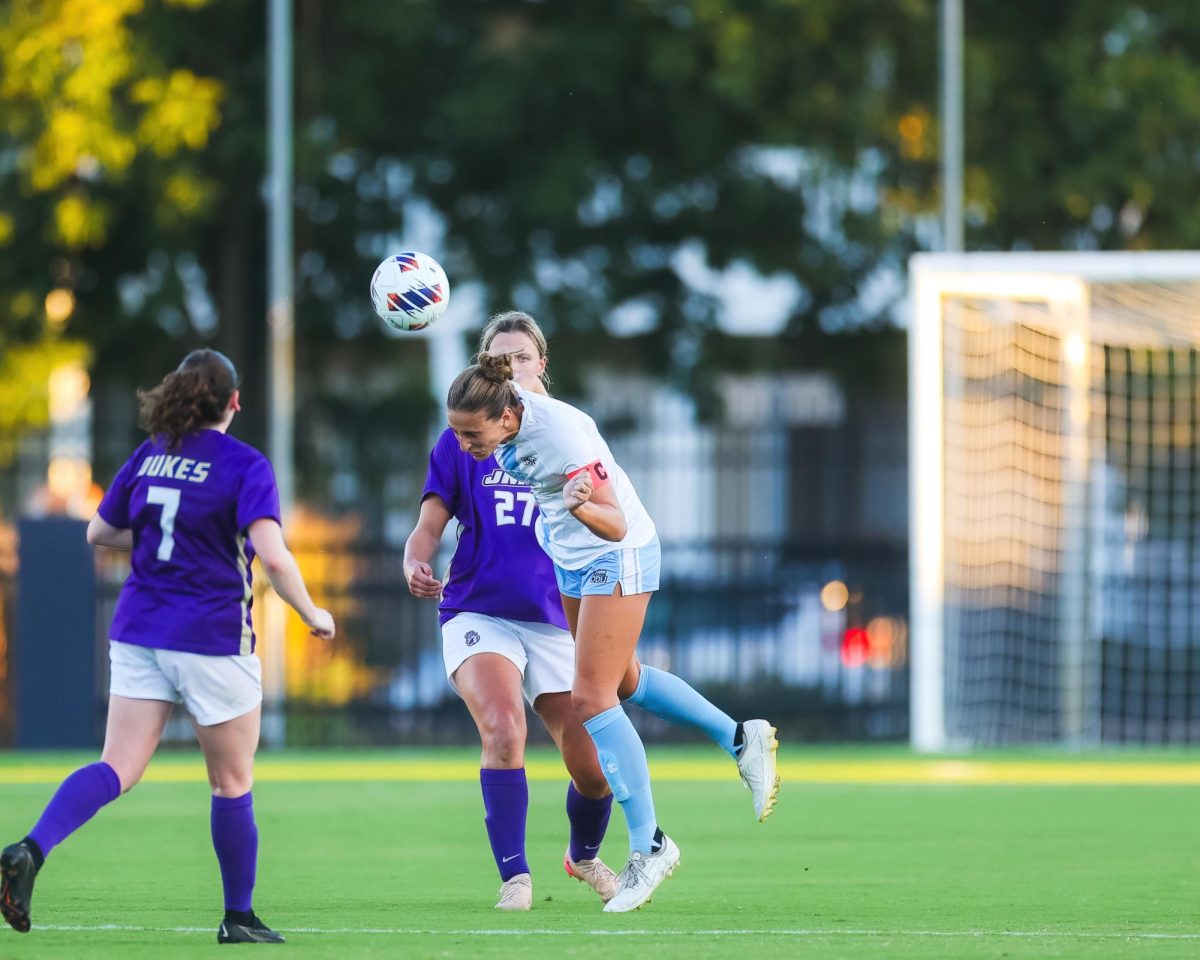When “The Women of Troy” was announced as ODURep’s second production of the fall 2023 theatre season, it was clearly a continuation of “Artemis, I,” produced in the spring of the same year. However, the initial announcement of the play also revealed that “The Women of Troy” is the third chapter of the Apollo & Artemis Trilogy and the continuation of a story started with “Niobe.”
The Apollo & Artemis trilogy consists of three Greek myth retellings centering on the eponymous gods written by Deborah Wallace, who has taught film at ODU since 2020. Since joining the department, she has directed a production of another one of her original plays, “Homesick,” as well as a production of the Greek play “The Bacchae.” Her latest directing works at ODU have been “Artemis, I” and “The Women of Troy.”
The Apollo & Artemis trilogy is an exploration of hubris, which Wallace noted was a common theme of Greek tragedies, along with the high prices that mortals pay when they offend the gods. The trilogy also explores the women of mythology, highlighting Niobe, the rare woman who grappled with hubris, and seeks to empower the Trojan women despite the horrors they faced.
“Niobe,” the first play in the Apollo & Artemis trilogy, has never been produced by ODURep. The Core Theatre Ensemble staged a production in Norfolk in September 2017, which Wallace did not direct. The play tells the story of Niobe, the queen of Thebes. She compares her fourteen children to Artemis and Apollo and judges that her children are superior, and that Niobe herself is a better woman than the gods’ divine mother, Leto. This act of hubris leads to Artemis and Apollo killing all of her children in retribution.
When crafting “Niobe,” Wallace said she wanted to write a tragic play inspired by a story that had not been arranged as a play in the past.
“I also didn’t want the focal character to be male. I wanted to investigate the idea of hubris, which is thematically very common in Greek tragedies, but I wanted to see that from a female perspective. […] the character of Niobe was one that really appealed to me,” she added.
Though the myth of Niobe seems largely disconnected from the saga of the Trojan War, which the latter two plays cover, Wallace noted that the characters of Artemis and Apollo connect these events. Niobe and Agamemnon are two mortals who anger Apollo and Artemis, and both are from the House of Atreus, which the gods have decided must end.
“Artemis, I” is the second play in the trilogy, which Wallace wrote at the beginning of the COVID-19 pandemic in March 2020. It was produced by ODURep in the spring of 2023, featuring local theatre actress Anna Sosa as Artemis and ODU student Joshua Moore as Apollo.
The play is primarily told from Artemis’ perspective. It is about her grief and rage and the high price Agamemnon had to pay for offending her.
“The Women of Troy” was quickly written and produced after “Artemis, I” and ran from Oct. 12-22. It retells the aftermath of the Trojan War covered in Euripides’ “Trojan Women” and Aeschylus’s “Agamemnon.” Many principal cast members from “Artemis, I” returned for “The Women of Troy.”
“The Women of Troy” seeks to empower the women of the Trojan saga despite their grim situations, demonstrating the tough and brutal choices that the women made. Andromache kills her child to make sure the Greeks wouldn’t and Cassandra kills herself to prevent Agamemnon and Apollo from owning her.
“I wanted her (Cassandra) to have that degree of agency and I also wanted her to subvert the idea of prognostication […] and whether or not you can subvert it,” said Wallace.
The play also ends with Artemis allowing Cassandra to stay dead when she has previously brought one of Niobe’s daughters and Iphigenia back to life at the ends of “Niobe” and “Artemis, I” respectively.
“I wanted it to feel as though that particular story was ending […] that Artemis was allowing there to be an end to this,” said Wallace.
When asked what drew her to write about Artemis and Apollo, Wallace said they embodied the Dionysian and Apollonian ideals of the Nietzschean tragedy.
She later elaborated, “There’s this intellectual versus this really creative, dark force, […] these two ideas, always in balance in some respects. So those were the two characters that I felt like could embody those two ideas.”
“Niobe,” “Artemis, I,” and “The Women of Troy” are not meant to be simple works of theatre. At their core, these plays are multidisciplinary works of art, which use song and dance alongside the spoken word performances to tell their stories.
“Niobe” featured dances by the children of the titular queen, including a segment that symbolizes the moment Artemis kills her daughters. “Artemis, I” featured several dance numbers from a Greek chorus of silver-painted goddesses of war, including one set to Rage Against the Machine’s song “Killing in the Name,” which symbolized the goddess’s commitment to helping Artemis enact her revenge. “The Women of Troy” had a full-cast dance sequence to Garbage’s cover of “Cities in Dust” that represented the capture of the Trojan women, as well as powerful vocal performances from Leila Bryant, who played Clytemnestra.
According to Wallace, she regularly incorporates music and dance into her works.
“I love seeing lots of bodies on stage. I love seeing people doing big production numbers. I love singing, I love all that stuff. […] there’s no real rule that says we can’t just reconfigure these stories as we want to.”
Lighting and sound played a big role in crafting the world of Wallace’s trilogy. “Artemis, I” opened with the chirps and chatters of birds and other woodland creatures to create the ambience of a rustic temple. “The Women of Troy” opened with the sounds of helicopters flying overhead and a searchlight roaming the stage to transport the audience to the war-torn city of Troy.
A particularly striking moment of “Artemis, I” was created in collaboration with the costume and the lighting department. The Pythia, a priestess of Apollo, was transformed under a blacklight, which revealed patterns on her dress and in her makeup. The mortal characters in the show had all been wearing white, and the sudden burst of color demonstrated the Pythia’s tether to the divine characters.
Wallace is known for adding a degree of modernity to her Greek plays to connect to audiences.
“There’s a degree of like preciousness to the theater that I want to just obliterate and invite new audiences in and […] make these kinds of stories accessible to everyone. […] I think that that’s on us as theatermakers.”
Wallace believes that collaboration between different art disciplines is important for theatre. When she casts actors, she looks at every artistic skill a potential actor has alongside their theatrical ability.
“Everything that happens [on stage] is a brushstroke. I ask actors to invest their performance with that. Everything your body is doing on stage should feel like a brushstroke on a canvas,” she said.
Wallace’s directorial works involve collaboration with both student performers and stage workers. The choreography in “Artemis, I” and “The Women of Troy” was largely created by students. Many actors who have worked with Wallace have said that she gave them creative freedom when deciding how to embody their characters.
“This is a conversation of collaboration between people, and between performers and director. And 99.9% of the time, their ideas are going to be more meaningful than mine are, and I have to trust that because they’re the ones that are connecting to these characters,” said Wallace.
“I like to give them the time to investigate and flesh out what they’re thinking in terms of how they connect to these characters,” she added.
At some point in the near future, Wallace hopes to direct productions of all three plays of the Apollo & Artemis trilogy chronologically so that audiences of ODURep can finally experience “Niobe” and see the progression of Artemis and Apollo from start to finish.


